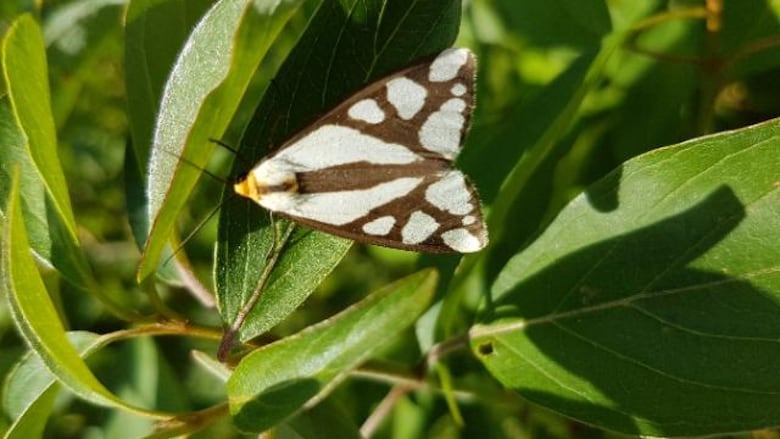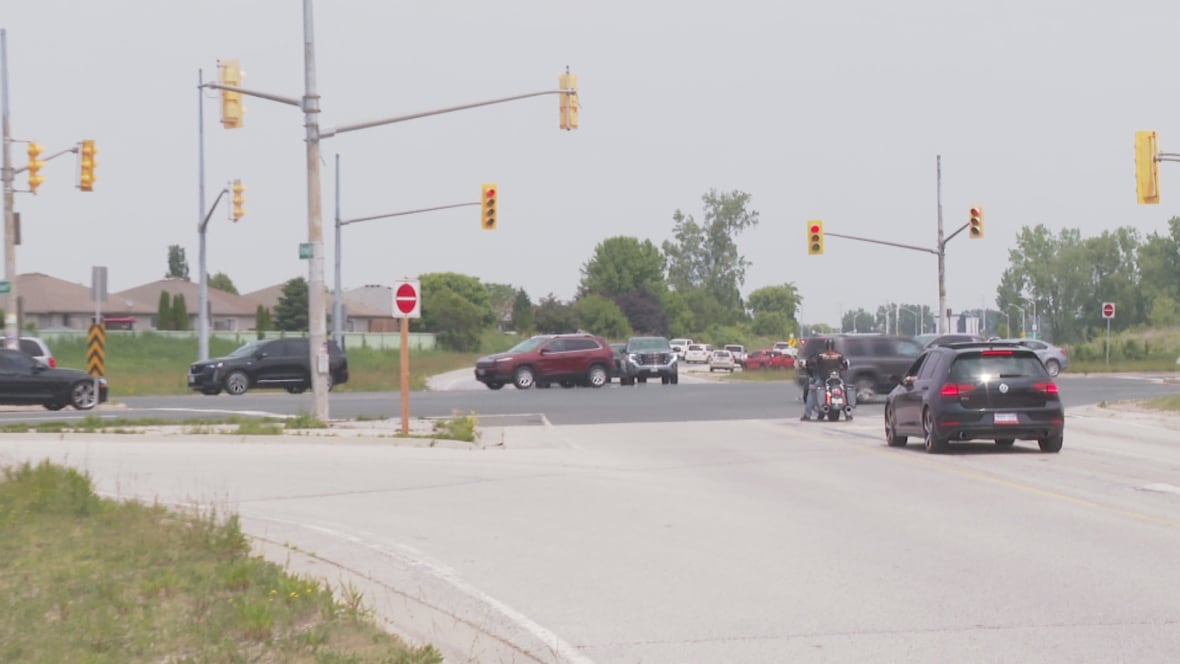First snakes, now moths — species at risk continue to delay big east Windsor project
Construction work is in the Banwell Road corridor, including an E.C. Row overpass

Another species at risk is delaying construction work on a massive project on Windsor's east-side.
The reversed haploa moth is a medium-sized moth composed of brown bands and white patches. It's been found in parts of southwestern Ontario, including Windsor-Essex, Lambton County, London and Norfolk County.
The species is currently categorized as "threatened," in the province's species at risk list and could become endangered, according to Ontario's environment ministry. That said, it still falls within the province's endangered species act.
It's been discovered in the area of the Banwell Road corridor and E.C. Row Expressway overpass project, near the NextStar electric vehicle battery factory on the city's east-side. All in, the work is expected to cost more than $100 million.

In June, CBC News first reported endangered Butler's gartersnakes were found in the same area grinding work to a halt. The all-clear would be given from the province once all of the snakes had been tracked and moved to a nearby similar habitat.
Lindsay Davidson, a spokesperson for the Ministry of the Environment, Conservation and Parks, says the moth has also now been identified within the footprint of the projects.
And that they're working with the city to consider an amendment under the endangered species act.
"If approved, the amendment would include conditions and requirements that permit for impacts to reversed haploa moth and its habitat, and to enable additional survey days for the relocation of Butler's gartersnake," he said in a statement.

"In areas of the project site where reversed haploa moth and its habitat have not been identified, and where snake surveys have been completed during the appropriate timing, the city of Windsor may proceed with vegetation clearing (primarily within areas located on the west side of Banwell Road)," Davidson added.
A spokesperson for the city of Windsor says the municipality is formalizing permit requirements related to the moth, while efforts related to the survey, salvage and relocation of the gartersnakes are "progressing well" and are anticipated to be "completed shortly."
"The public can expect to see mobilization of the general contractor followed by the localized vegetation clearing and commencement of construction activities in the coming weeks," said Michael Janisse with the city's communications department.
"The project remains on track and the media and public can expect regular detour notifications and updates as the project progresses."
Gary Wheeler with the ministry told CBC News earlier this month that there must be five consecutive survey days where no snakes are found to help ensure they've all been relocated.
Stacey McGuire, Windsor's executive director of municipal engineering, said in mid-June the initial discovery of the snakes set the city back a "few months." At that time, she added the hope was for everything to be built and open around summer 2027.

